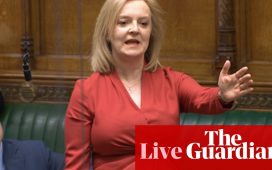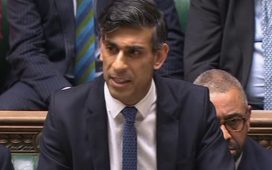 Image copyright
Image copyright
WPA Pool/Getty Images
The first leaders’ TV debate ahead of the 2019 general election will take place this week.
They have been part of the build-up to polling day since 2010. So when are they taking place this time, and who is taking part?
What is an election debate?
The debates are often seen as key moments in a campaign. The party leaders’ answers, body language and any slip-ups are scrutinised in the aftermath.
During the debate, party leaders are given the opportunity to discuss each others’ manifesto pledges, as well as any remarks made on the campaign trail.
The debates usually include questions from the host on a variety of topics, such as Brexit, the economy or transport, followed by questions from the audience.
Each debate typically lasts up to 90 minutes and millions of people tune in to see the leaders held to account.
When are the election debates?
The first debate, between Prime Minister Boris Johnson and Labour leader Jeremy Corbyn, will take place on 19 November, and will be broadcast by ITV.
Sky News has proposed a debate between Mr Johnson, Mr Corbyn and the leader of the Liberal Democrats, Jo Swinson, to take place on 28 November.
The BBC has announced it will broadcast two election debate programmes, as well as a special aimed at younger audiences. Its coverage will include:
- 22 November: A Question Time Leaders’ Special. Conservative, Labour, SNP and the Lib Dem party leaders will take questions from the audience
- 29 November: A live debate with figures from the seven major political parties in the UK – Conservatives, Labour, Lib Dems, Scottish National Party (SNP), Greens, Plaid Cymru and the Brexit Party
- 6 December: A live head-to-head debate between Boris Johnson and Jeremy Corbyn
- 9 December: Question Time Under 30 focused on an audience made up of young voters
Who gets to take part?
At the moment, it’s up to each broadcaster to decide how many parties are involved in a leaders’ debate, and whether they even take place.
The Liberal Democrats are launching a legal challenge against ITV over its decision to exclude their leader from the channel’s first election debate.
ITV said it would hold a live interview-based programme alongside the leaders’ head-to-head to allow other parties to comment, as well as another multi-party debate ahead of the 12 December poll.

Media playback is unsupported on your device
Jo Swinson says it is wrong to exclude “a voice of Remain” and the only woman who could, arguably, be the next prime minister.
She contends that ITV is breaking broadcasting rules set by watchdog Ofcom, by not giving “due weight” to her party in an election period.
Some politicians have chosen not to take part in the past. Theresa May’s rivals criticised her absence in the seven-way 2017 general election debate.
In 2015, a planned one-on-one debate between Labour leader Ed Miliband and Prime Minister David Cameron did not take place, following the breakdown of negotiations between the broadcasters and the political parties. However, there was a two-hour debate featuring the leaders of seven parties, including Labour, Conservative, the Lib Dems, UKIP, the Greens, SNP and Plaid Cymru.
When was the first TV debate?
As long ago as 1964, there were calls for televised debates in the UK. Labour’s Harold Wilson challenged Conservative Prime Minister Sir Alec Douglas-Home to one. He refused the offer.
Decades passed, and resistance remained. Critics said that TV debates between leaders risked turning a political campaign into entertainment.
In the US, the first nationally televised face-off between Democratic and Republic presidential candidates took place in 1960, and featured John F Kennedy and his rival Richard Nixon.
Image copyright
Hulton Archive/Getty Images
TV debates are a long-standing feature of US presidential campaigns
But arguably, the first presidential debate took place four years earlier, with two female opponents standing in for candidates Adlai Stevenson and then President Dwight Eisenhower. Former first lady Eleanor Roosevelt represented the Democrats, and Margaret Chase Smith, the Republican party.
The first televised debates in the UK did not take place until 2010. Broadcasters and parties agreed to hold three head-to-head debates between Gordon Brown, David Cameron and Nick Clegg, then party leaders of Labour, the Conservatives and the Liberal Democrats respectively.
Is there always an audience?
There’s nothing in electoral law that says a live audience has to be present.
But ahead of the 2010 debates, TV channel bosses agreed a few key “principles”.
These included the presence of a live audience, selected from the local area by an agreed polling company to ensure fairness.
Following the 2017 election debate broadcast by the BBC, questions were raised over the make-up of the audience.
Image copyright
AFP/Getty Images
During the debate there was cheering and booing which led some, including then foreign secretary Boris Johnson, to suggest the audience was biased.
The polling company ComRes selected the audience. Its founder, Andrew Hawkins, said the recruitment of people to watch the debate was “more complex” than he had ever witnessed. .
He pointed out that five parties were left of centre, which meant “cheering is going to be skewed in one direction”.
Awkward clashes between audience members and candidates can also gain a lot of attention.
Brexit Party leader Nigel Farage went viral after an election debate in 2015, where he criticised the studio audience, saying “the real audience are sitting at home”.














